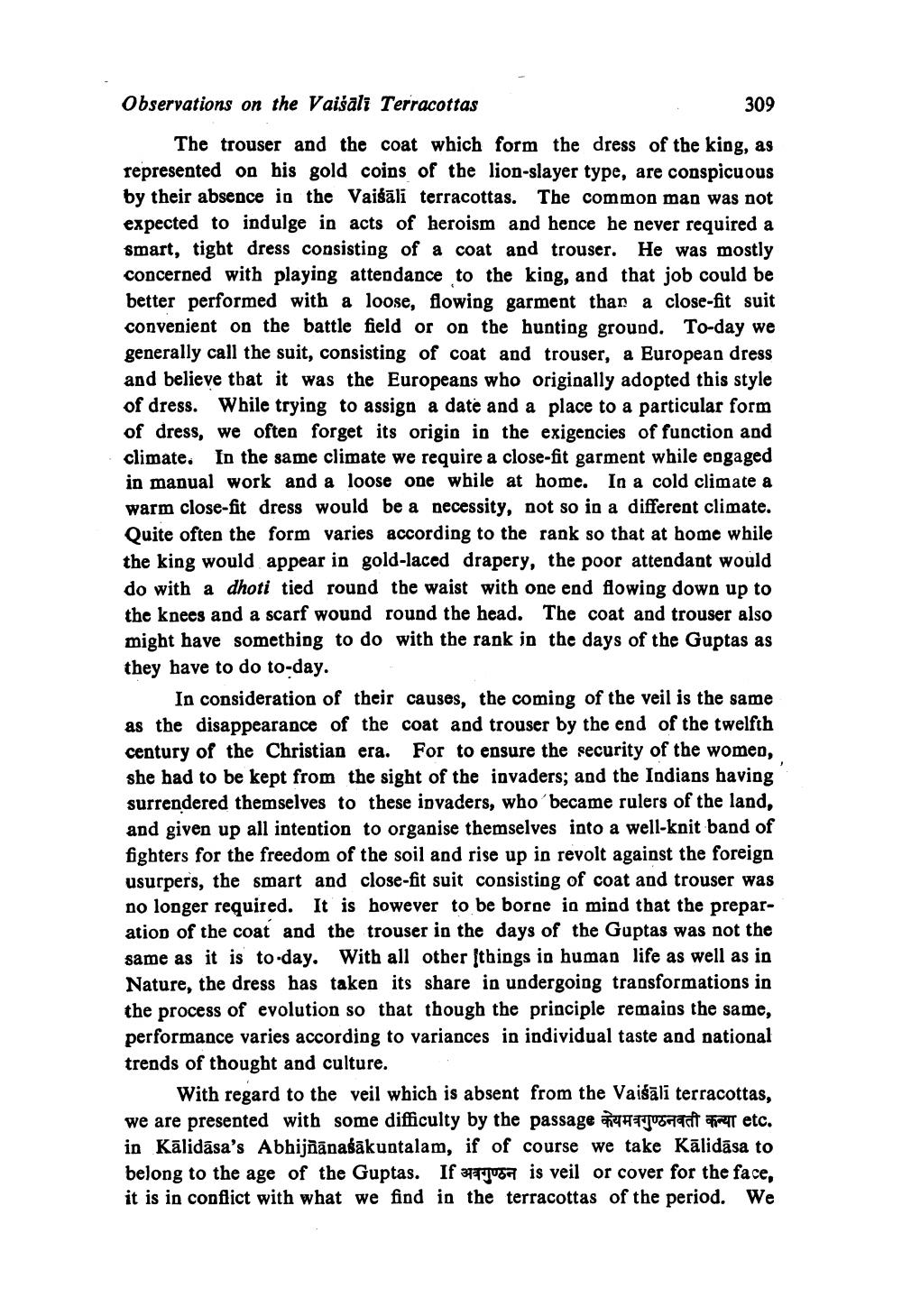________________ Observations on the Vaisali Terracottas 309 The trouser and the coat which form the dress of the king, as represented on his gold coins of the lion-slayer type, are conspicuous by their absence in the Vaigali terracottas. The common man was not expected to indulge in acts of heroism and hence he never required a smart, tight dress consisting of a coat and trouser. He was mostly concerned with playing attendance to the king, and that job could be better performed with a loose, flowing garment than a close-fit suit convenient on the battle field or on the hunting ground. To-day we generally call the suit, consisting of coat and trouser, a European dress and believe that it was the Europeans who originally adopted this style of dress. While trying to assign a date and a place to a particular form of dress, we often forget its origin in the exigencies of function and climate. In the same climate we require a close-fit garment while engaged in manual work and a loose one while at home. In a cold climate a warm close-fit dress would be a necessity, not so in a different climate. Quite often the form varies according to the rank so that at home while the king would appear in gold-laced drapery, the poor attendant would do with a dhoti tied round the waist with one end flowing down up to the knees and a scarf wound round the head. The coat and trouser also might have something to do with the rank in the days of the Guptas as they have to do to-day. In consideration of their causes, the coming of the veil is the same as the disappearance of the coat and trouser by the end of the twelfth century of the Christian era. For to ensure the security of the womeo, she had to be kept from the sight of the invaders; and the Indians having surrendered themselves to these invaders, who became rulers of the land, and given up all intention to organise themselves into a well-knit band of fighters for the freedom of the soil and rise up in revolt against the foreign usurpers, the smart and close-fit suit consisting of coat and trouser was no longer required. It is however to be borne in mind that the preparation of the coat and the trouser in the days of the Guptas was not the same as it is today. With all other (things in human life as well as in Nature, the dress has taken its share in undergoing transformations in the process of evolution so that though the principle remains the same, performance varies according to variances in individual taste and national trends of thought and culture. With regard to the veil which is absent from the Vaisali terracottas, we are presented with some difficulty by the passage Hausrat Fall etc. in Kalidasa's Abhijnanasakuntalam, if of course we take Kalidasa to belong to the age of the Guptas. If 3 usa is veil or cover for the face, it is in conflict with what we find in the terracottas of the period. We




